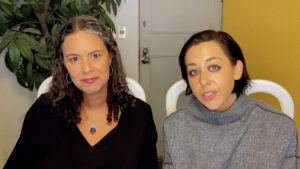Project Overview
Each year 36 million trees fall in American cities. The vast majority are mulched, landfilled, or burned—at eye-popping economic and environmental cost. At the same time, cities struggle to equitably reforest neighborhoods, with communities of color long burdened by unequal access to benefits that urban trees provide. Connecting these two challenges, Cambium Carbon leverages the urban tree life cycle, showing that by processing—rather than discarding—downed urban trees, we can create a waste-to-value revenue stream that returns needed funds to replant low-canopy neighborhoods. In this circular economy model, green jobs are created through urban “Reforestation Hubs” that could upcycle an estimated 46 million tons of merchantable wood every year into products such as lumber, bioenergy, and compost. Building the infrastructure to upcycle such wood into high-value durable goods creates an opportunity to engage residents who face barriers to traditional employment, while providing training in technical skills across the tree life cycle. Meanwhile, using salvaged wood displaces emissions-intense global supply chains. And by investing in tree planting among underresourced communities, Cambium Carbon can catalyze carbon sequestration, stormwater management, air pollution mitigation, and energy savings in places that need them most.
Five Questions
Learn more about this project
Meet our other 2021 awardees

North Carolina (Operating nationwide)
Every Campus A Refuge leverages the sizable resources of colleges and universities to provide a stronger, more dignified landing for refugees.

Daniel Bögre Udell &Kristen Tcherneshoff
New York (Operating globally)
Wikitongues safeguards threatened heritage languages by giving people resources to document, teach, and promote culture-sustaining mother tongues.

Esperanza Dillard &Talila "TL" Lewis
Nationwide
HEARD’s trauma-informed reentry program provides healing, empathy, and justice for deaf/disabled people who have been harmed by the carceral system.

Maryland
Homeownership and construction skills-building come together as a platform that centers Black women, reclaims historic homes, and sparks neighborhood-scale change.

Ohio
Co-op Dayton builds community- and worker-owned cooperatives that center Black workers, expand democratic participation, and renew long-neglected neighborhoods.

Ariel Koren &Fernanda de Oliveira Silva
California (Operating globally)
Respond provides trauma-informed, life-critical translation and interpretation services to asylum seekers and anyone needing language support in contexts of crisis.

Wisconsin (Operating nationwide)
Driven by a reparations ethic, Nuns & Nones collaborates with Catholic sisters to invest their land and assets in regenerative land stewardship.

Missouri
The Black-led Freedom Community Center holistically integrates restorative justice with personal healing and broad-based advocacy to transform communities.

Forestry and Fire Recruitment Program
California
A promising California model builds a pipeline of needed wildland firefighters by forging career pathways for individuals formerly incarcerated in “Fire Camps.”

 Learn More
Learn More